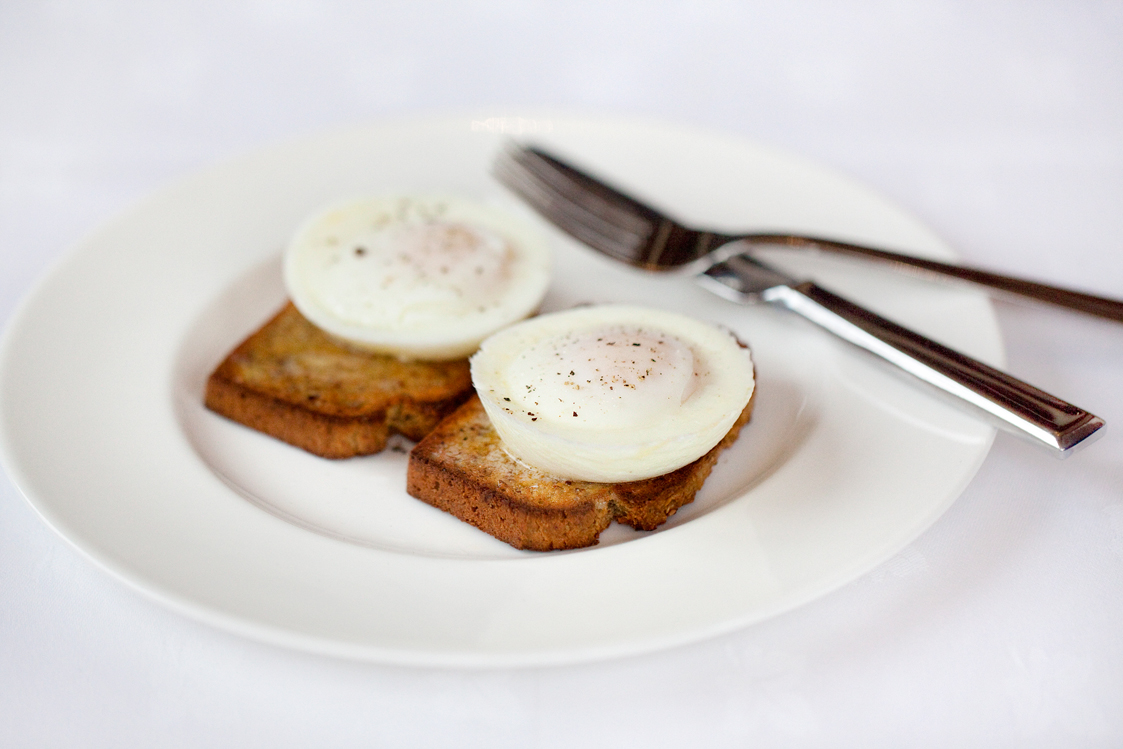There are days when I hanker after the simple pleasure of a perfectly cooked poached egg - soft in the middle and perfectly formed like a mozzarella ball.
Sometimes I just want to eat it with some generously buttered toast for breakfast. Other times I want it to sit proudly atop poached smoked haddock, root vegetable rösti or some griddled asparagus - it’s runny yolk forming an instant dressing. Or for something even more indulgent, drizzled over with hollandaise sauce à la Eggs Benedict style and served with slices of smoked salmon.
However, producing beautifully cooked poached eggs is tricky and, for all my cooking experience, I can never say with confidence that I am able to manage more than one or two at a time. It doesn’t matter if I use the freshest eggs, add vinegar or swirl the water, if I’m trying to cook more than two I inevitably end up with straggly looking eggs and a very messy pan!
Enter the Poach Pod - a reusable silicon egg poacher that delivers identical, consistent and lightly poached eggs every time. No guesswork, no mess. And even though it doesn’t produce the organic shape of a traditionally poached egg that I like, it is nonetheless a genius solution to the problem of cooking more than two eggs at the same time.
Perfect Poached Eggs (V)
Instructions
Lightly oil the pods before use (I brush mine inside with a little melted butter).
Half fill a lidded pan (I use a large shallow casserole style pan with a glass lid) with boiling water from the kettle to a depth of about 1.5 inches. Note: It wants to come about halfway up the side of the Pod as it floats in the water - if it’s too deep it may go over the side of the Pod, if it’s too shallow the Pod just sits on the bottom of the pan.
Crack a fresh egg into each Pod and carefully lower into the boiling water.
Cook for 4-5 minutes with the lid on (my large eggs took exactly 5 minutes).
When cooked, remove the Pods from the pan. Carefully tip off any excess liquid (condensed steam) if there’s any sitting on top of the eggs. Run a spoon around the edge of the eggs before easing out. I prefer not to invert them (as Poach Pod suggest) because I like to see the egg yolk in contrast to the white.
If you still want to try the traditional method of poaching an egg, here are the most significant points to remember:
- Make sure your eggs are really fresh.
- Add a small dash of vinegar and some sea salt to a pan of lightly simmering water.
- Crack the eggs individually into a ramekin or cup.
- Create a gentle whirlpool in the water to help the egg white wrap around the yolk.
- Then gently lower the eggs, one at a time into the water, white first.
- For a soft runny yolk that’s just hardening at the edges cook for about 4 minutes. For a more runny yolk, 3 minutes should suffice.
- To test when they’re done, lift one out with a slotted spoon onto a plate lined with a paper towel and give a gentle poke with a spoon. If it feels too soft put it back in the water for a minute or two more to firm up.
- Remove the egg with a slotted spoon and serve immediately with a sprinkling of sea salt and black pepper.
More information on Poach Pods:
You can buy Poach Pods from Waitrose, Ocado and Lakeland. Lakeland also sell a PoachPod Lift to enable you to place in and remove the Pod from the boiling water more easily. Poach Pods can also be used as individual jelly moulds.
Carbohydrate 0g Protein 8g - per large egg


